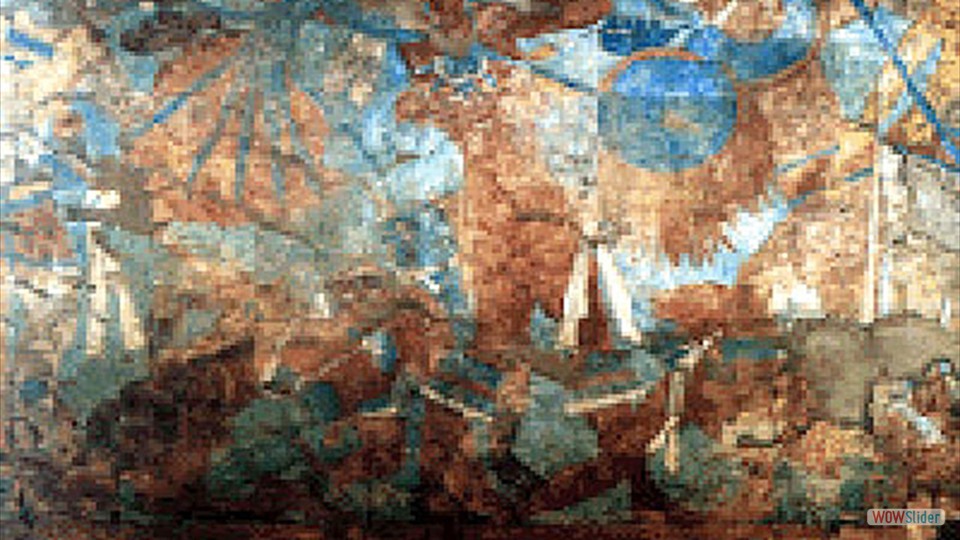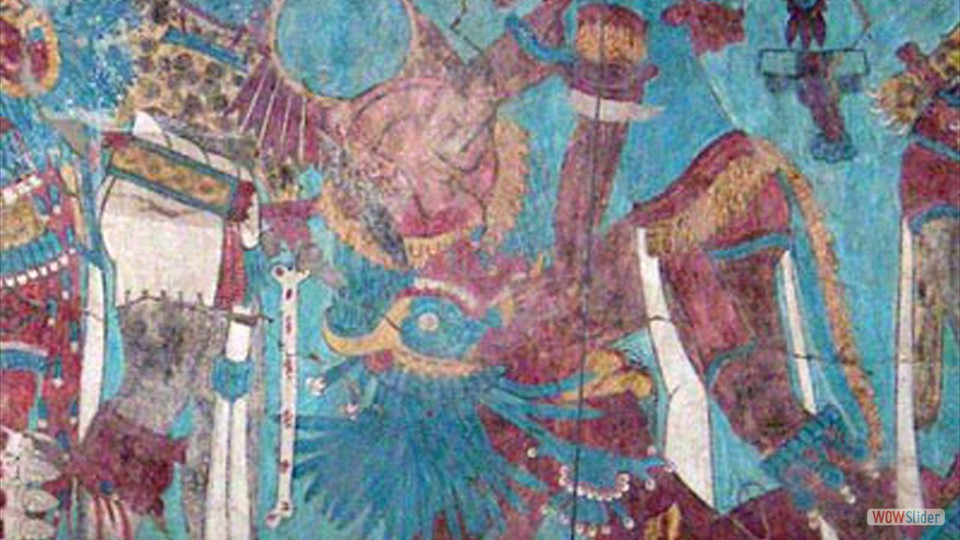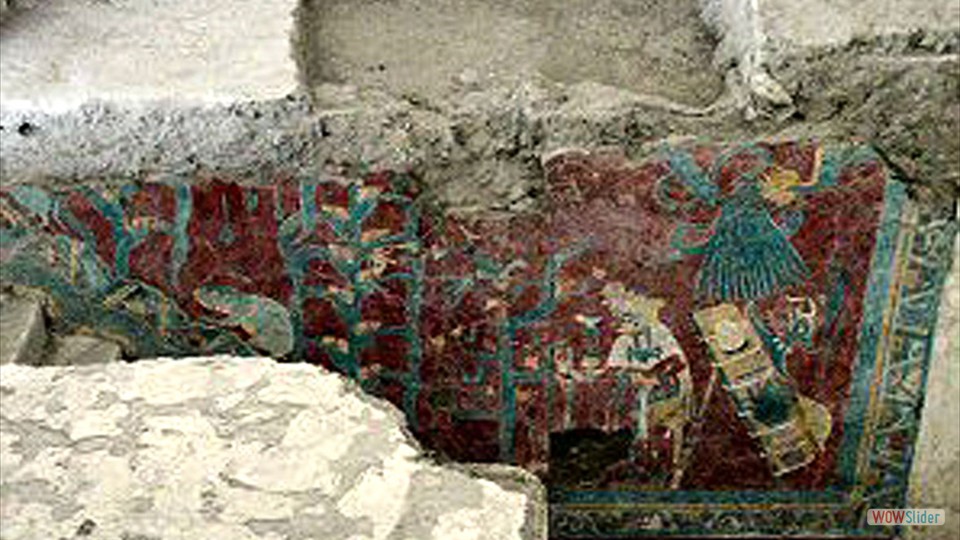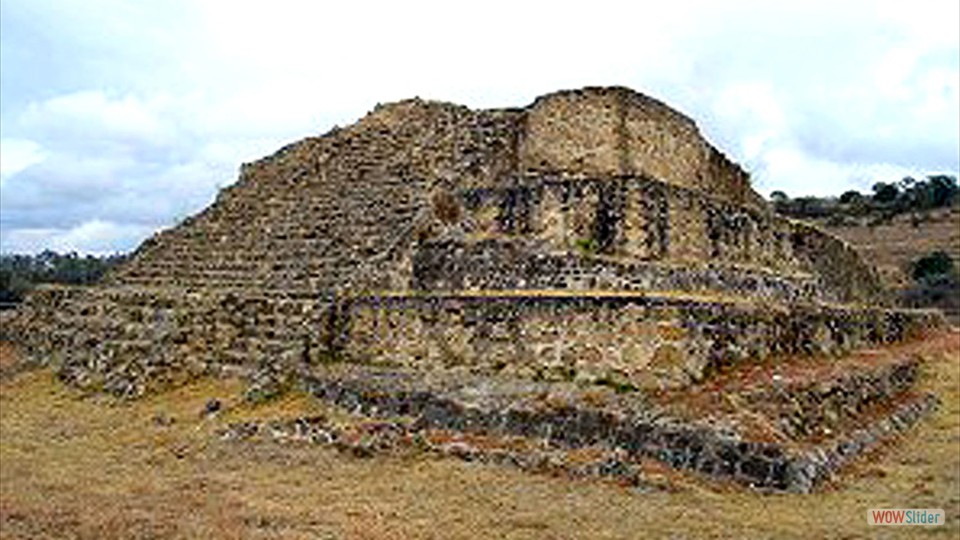The people who lived in Cacaxtla were a mixed people olmeca-xicalanca, also known as "late olmecas". Probably it was after the fall of Teotihuacan that foreign groups coming from the coast of the Gulf of Potonchan occupied the South zone of the state: Cholula and the hills and valleys of Tepectipac, Atlachino, Cacaxtla and Nativitas. Cacaxtla is the most representative site of the Texcalac culture. Olmeca-xicalanca was based in the region from about 300 B.C.E. and they established its capital in Cacaxtla. During the peak of Cacaxtla, a dispersion of the inhabitants occurred. The territorial divisions suggest the formation of chieftainships as a typical form of regional political organization. This suggest the existence of several governors with similar rights of control. The polarization of the power gave way to several internal conflicts. All this is clearly documented in the pintural mural of Cacaxtla. Cacaxtla was a palatial city, the ceremonial center measures 1700 ms in length by about 800 ms. wide, and consists of several platforms that are stepped do to the unevenness of the land. Between the platforms there are deep pits that could be used for defense. In each terrace there is a set of buildings. The pictorial art of Cacaxtla is characterized, fundamentally, by the use of the human figure. The mural painting program was made between 750 and 850 C.E. by artists who combined Mayan and Teotihuacanas techniques, resulting in murals of high quality and a unique iconography using pigments such as Mayan blue, yellow, red, the black and white. The paintings of Cacaxtla have all the techniques of Mayan art, but they abound in teotihuacanos details, that's why this ceremonial center suggests a mixing of both cultures. Several authors think that it was a place where the merchants met coming from the high lands and traveling towards the sea.
Copyright: © 1999 thru 2021. All the content; content being images, statements and writing of this website including E-Book are the copyright of Freedom8.net and Walter F. Petrucci, West Hurley, New York.
All rights expressly reserved and as such, protected by U.S. and International Copyright Laws. Design by freedom8 webmaster Version8.








 1
1 2
2 3
3 4
4 5
5 6
6 7
7